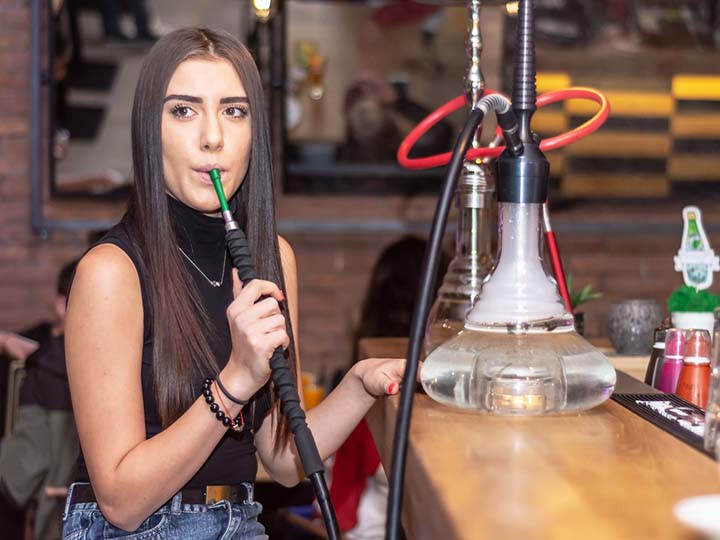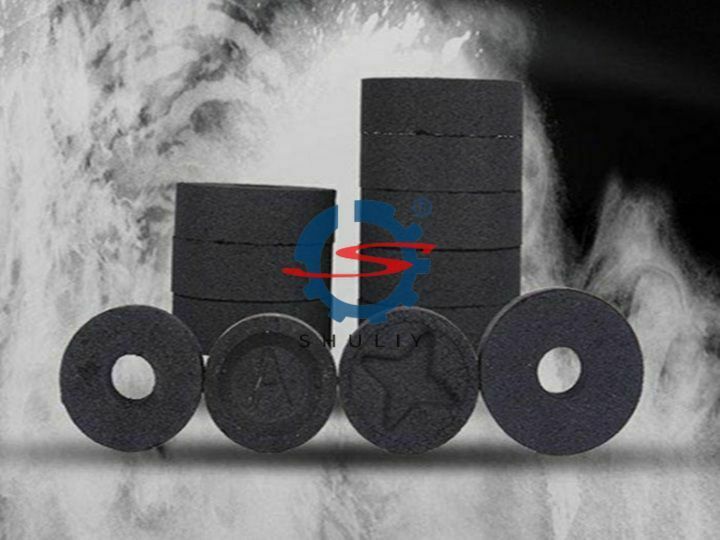Nehmen Sie sich 3 Minuten Zeit, um einen vollständigen Überblick über Wasserpfeifen zu erhalten
Was ist Shisha?
Der in Wasserpfeifen verwendete Tabak unterscheidet sich von Zigaretten oder jeder anderen Form des Rauchens. Traditionell handelt es sich um eine feuchte Mischung – Maassel oder Tobamel genannt – aus frischen Tabakblättern, Melasse oder Honig und halbgetrockneten Früchten oder Fruchtfleisch. Manche Raucher fügen dem Wasser Granatapfelsaft oder Rosenöl hinzu, um den Rauchgeschmack zu verstärken.
Während einige Shisha-Raucher immer noch starke türkische Tabake bevorzugen, bevorzugen viele eine Vielzahl aromatisierter Tabake, die allgemein als Shishas bekannt sind. Diese dunkle, feuchte Mischung gibt es in Geschmacksrichtungen wie Apfel, Kirsche, Aprikose, Wassermelone, Rose, Jasmin, Vanille, Honig und Lakritze, zusätzlich zu exotischeren Mischungen wie Zitronen-Cola, Kohl-Chino, Apfel-Minze und einer nahezu unbegrenzten Liste anderer individuelle Mischungen.

Einführung von Shisha-Kohle
Wasserpfeifen-Raucher sitzen oft zusammen und sprechen über die besten Shisha (Shisha-Tabak) Geschmäcker und Marken, die verfügbar sind. Sie wenden sich dann den Größen und Stilen von Wasserpfeifen zu, von groß bis klein, günstig bis unbezahlbar, Farben, Schläuchen und mehr. Der am häufigsten übersehene Teil des Wasserpfeifen-Raucherlebnisses ist jedoch tatsächlich, wie das Ganze funktioniert. Kohle.
Da Wasserpfeifentabak sehr feucht ist, muss er unbedingt mit Wasserpfeifenkohle geraucht werden. Tabak wird nicht direkt angezündet, sondern mit auf Alufolie oder Drahtgeflecht gelegten Kohlen darüber oder in einer Schüssel mit einer feuchten Mischung erhitzt. Jede Schale dieses feuchten Tabaks hält lange und erfordert oft mehrere Nachfüllungen mit Holzkohle. In der Vergangenheit war es in den Ritualen und Traditionen rund um das Anzünden und Rauchen von Shishas oder Narghiles strengstens verboten, Tabak falsch anzuzünden – Rauchern war es sogar erlaubt, ihre Zigaretten an Shisha-Kohlen anzuzünden.
Wie viele Arten von Shisha-Kohle gibt es?
Auf dem wachsenden Shisha-Markt gibt es viele Arten von Kohle, und Anfängern fällt es möglicherweise schwer, die beste Flamme auszuwählen. Sie sind praktisch, weil man sie mit dem Zippo anzünden kann, wenn der Wind weht, vielleicht wenn es regnet. Allerdings verleihen die gleichen Chemikalien, die die Kohle schnell verbrennen, auch einen (oft unerwünschten) Geschmack zu Ihrem Shisha-Raucherlebnis. Sie tauschen also Bequemlichkeit gegen Geschmack.
Die nächste Option ist ein Kohlescheit auf Basis von Zitronen- oder Olivenholz. Diese oft als „natürliche“ Kohlen bezeichneten Kohlen neigen dazu, sauberer zu verbrennen und übermäßige Kohlegerüche zu beseitigen. Sie entzünden sich nicht mit einer tragbaren Flamme, es sei denn, Sie haben zufällig eine Taschenlampe im Handschuhfach. Normalerweise benötigen Sie ein Kochfeld und eine kurze Wartezeit. Das Endergebnis kann sich durchaus lohnen, da Sie die Chemikalien der spontan brennenden Kohle nicht schmecken.
Schließlich gibt es noch „Holzkohlesteine“, die oft als „ägyptische Kohle“ bezeichnet werden. Diese Holzkohlesteine bestehen ebenfalls aus Zitronenholz und sehen aus wie zufällige Formen, die man damit grillen kann. Es dauert lange, bis sie auf einem normalen Elektroherd aufgeheizt sind. Daher sollten Sie zum Anzünden der Kohlen einen Propan-Campingkocher herausholen. Der Geruch brennender Kohle kann den angenehmen Geruch Ihres Zuhauses übertönen, daher sollten Sie es sich zweimal überlegen, bevor Sie Kohle in Ihrer Küche verbrennen. Trotz ihres vorherrschenden Heizgeruchs stellen diese Kohlen die geruchloseste Wärmequelle auf dem Markt für wasserbituminöse Kohle dar. Holzkohlesteine sind normalerweise groß und brennen schnell, also machen Sie Ihre Schüssel nicht kaputt.

Abschluss
Welche Art von Wasserpfeife Sie rauchen, sollte letztendlich von Ihren Vorlieben und Ihrer Situation abhängen. Wenn Sie zu Hause Naturkohle rauchen, ist es wunderbar, auf einem Last-Minute-Ausflug an den Strand eine Kiste mit Schnellfeuerkohlen dabei zu haben.
Da Shisha immer beliebter wird, wächst der Markt für Shisha-Kohle weltweit. Shuliy Machinery ist ein leistungsstarker und zuverlässiger Hersteller von Shisha-Kohleproduktionslinien. Diese Anlage kann einen vollständigen Prozess der Karbonisierung, Zerkleinerung, Mischung, Tablettierung, Trocknung und Briquetierung abschließen. Und sie kann eine breite Palette von Rohstoffen verwenden, wie Holz, Früchte, Reishülsen, Bambus, Kokosnussschalen usw. Alles in allem ist es an der Zeit, ein Shisha-Kohle-Geschäft zu starten. Bitte kontaktieren Sie uns, falls es Fragen gibt.
